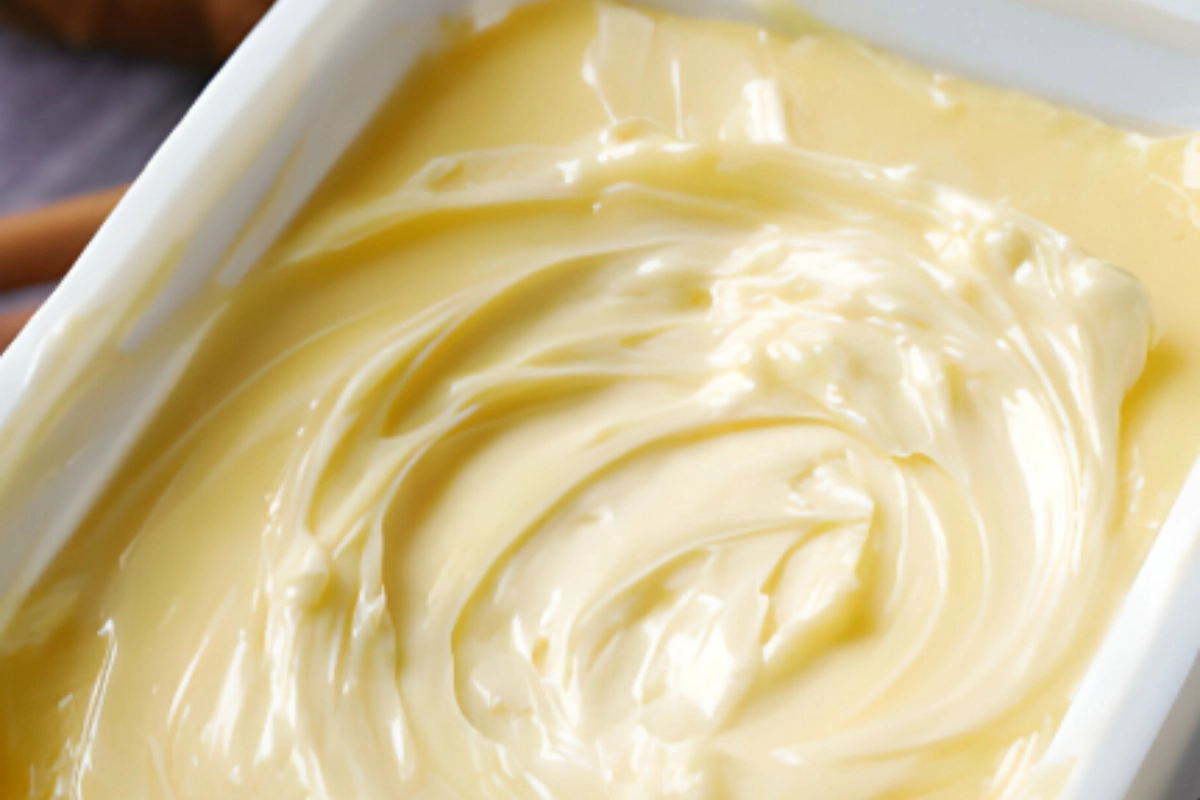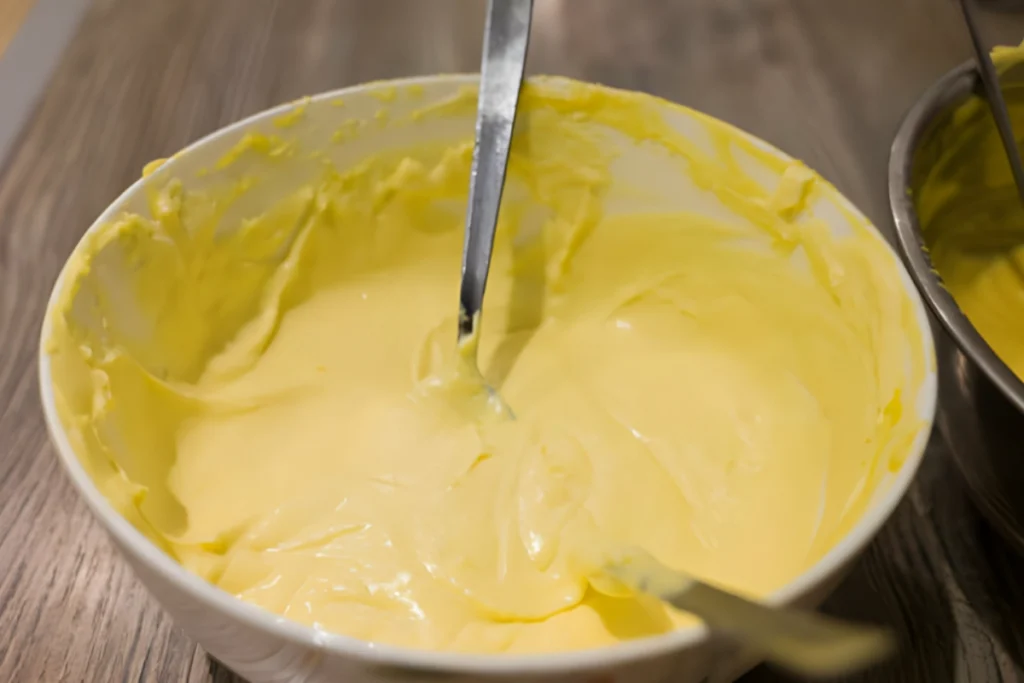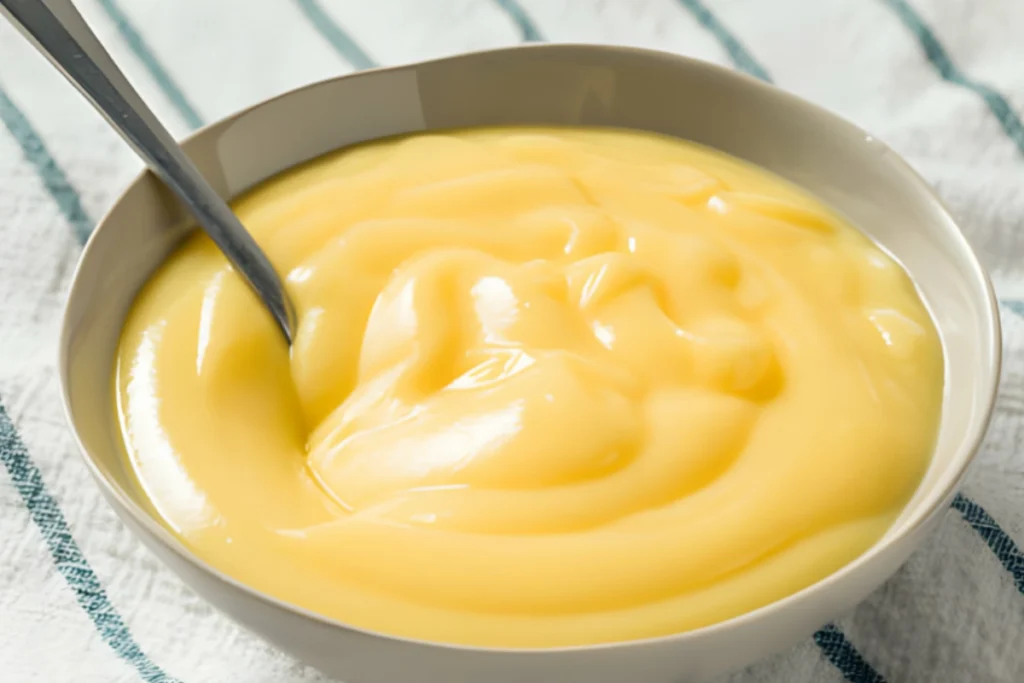Introduction to Custard Filling
Definition and Overview of Custard Filling
Custard filling, a luscious and creamy delight, is a staple in the realm of desserts. Its unique characteristics are:
- Versatility: Used in various desserts like pies, tarts, and pastries.
- Texture: Known for its smooth and rich consistency.
- Flavor: A sweet and subtle taste, often enhanced with vanilla.
At its core, custard is a cooked mixture primarily made of milk or cream and egg yolks. The addition of sugar lends it the sweetness, while thickeners like cornstarch or flour give it the desired consistency. This delightful mixture is often flavored with vanilla, but there are numerous variations that include other flavors.
Custard’s history is as rich as its taste. Originating from ancient times, it has evolved into a modern-day dessert essential. For a deeper dive into custard’s varieties and its historical journey, the Custard – Wikipedia page offers a comprehensive overview. This page not only enriches your understanding but also provides a glimpse into the culinary versatility of custard.
In the realm of desserts, custard stands out for its simplicity and elegance. Whether it’s the base of a sophisticated French tart or a comforting homemade pie, custard filling remains a beloved choice. For those eager to see custard in action, our Cake Recipe with Custard Filling – A Delightful Dessert showcases how this versatile filling can elevate a simple cake to a gourmet level.
Historical Background of Custard
The history of custard is as rich and varied as its flavors. Here are some key points:
- Ancient Origins: Custard’s roots can be traced back to ancient times.
- Evolution Over Centuries: It has evolved significantly from its initial form.
- Global Influence: Custard has influenced desserts worldwide.
Custard, in its earliest form, was likely a simple mixture of eggs and milk. Over the centuries, it has transformed, adopting new flavors and techniques from different cultures. This evolution reflects the adaptability and enduring popularity of custard in culinary history.
The journey of custard through various cultures and eras is fascinating. From the medieval European banquets to the modern-day dessert tables, custard has maintained its status as a luxurious and versatile dessert component.
Custard’s ability to blend with various culinary traditions while retaining its core identity is remarkable. Its historical significance is not just in its taste but also in its cultural impact, making it a timeless dessert favorite.
Ingredients and Preparation
Key Ingredients in Custard Filling
Custard filling, a symphony of simplicity and flavor, is made from a few key ingredients. Each component plays a vital role in creating the perfect custard:
- Egg Yolks: The backbone of custard, providing a rich texture and color.
- Sugar: Adds sweetness and balances the richness of the yolks.
- Cornstarch: A thickening agent that ensures a smooth consistency.
- Vanilla Extract: Infuses custard with its signature aroma and flavor.
- Whole Milk: The liquid base that binds all ingredients together.
- Butter: Enhances the creamy texture and adds a subtle richness.
Egg yolks are crucial in custard making, as they give the filling its characteristic richness and color. The yolks, when gently cooked with milk, create a luscious texture that’s unmistakably custard.
The balance of sugar, cornstarch, and vanilla extract is what gives custard its delightful sweetness and thick yet silky consistency. Vanilla, in particular, is a game-changer, imparting an irresistible aroma that elevates the custard. Discover the role of alternative ingredients in our feature on Why is Custard Powder Used in Cakes?, where we explore innovative baking techniques.”
Step-by-Step Preparation Guide
Creating the perfect custard filling is an art that requires precision and patience. Here’s a detailed guide to help you master this delightful dessert:
- Heat the Milk: Begin by pouring the whole milk into a saucepan. Heat it gently until it’s just below boiling, but do not let it boil.
- Mix Egg Yolks and Sugar: In a separate bowl, whisk together the egg yolks and half of the sugar. This mixture should be smooth and light.
- Combine Cornstarch and Remaining Sugar: In another bowl, mix the remaining sugar with cornstarch. This helps in thickening the custard.
- Temper the Egg Mixture: Slowly add a cup of the warm milk to the egg mixture, whisking continuously. This process, known as tempering, prevents the eggs from curdling.
- Cook the Custard: Pour the tempered egg mixture back into the saucepan with the remaining milk. Cook over medium-low heat, stirring constantly, until the custard thickens.
- Add Butter and Vanilla: Once the custard has thickened, remove it from the heat. Stir in the butter and vanilla extract for added richness and flavor.
- Strain and Cool: To ensure a smooth texture, strain the custard to remove any lumps. Then, let it cool to room temperature. Cover it with plastic wrap to prevent a skin from forming.
The key to a successful custard is in the details – the gentle heating of milk, the careful tempering of eggs, and the vigilant stirring during cooking.
Variations and Uses
Different Types of Custard Filling
Custard filling, in its essence, is a versatile component in the culinary world, adaptable to various forms and flavors. Here are some of the popular types:
- Baked Custard: A denser version, often used in custard pies and crème brûlée.
- Stovetop Custard (Pastry Cream): Creamier and used in éclairs, cream puffs, and fruit tarts.
- Flavored Custards: Infused with ingredients like chocolate, coffee, or fruit purees for a unique twist.
Baked Custard is characterized by its firm texture, achieved by baking a mixture of eggs, milk, and flavorings in the oven. This type is ideal for dishes that require a more solid structure, like custard pies or quiches.
Stovetop Custard, also known as pastry cream, is smoother and more spreadable, perfect for filling pastries or as a base for fruit tarts. The key to mastering this type lies in the cooking process, where constant stirring ensures a silky, lump-free texture.
Flavored Custards open a world of creativity, allowing chefs and home cooks to infuse traditional custard with various flavors. From the richness of chocolate to the tang of citrus, these variations add an exciting twist to the classic custard. Each flavor not only adds a unique taste but also transforms the custard into a versatile ingredient that complements a wide range of desserts.
Culinary Uses of Custard Filling
Custard filling, with its creamy texture and sweet flavor, plays a versatile role in the culinary world. Its uses extend far beyond the basic applications, making it a favorite among chefs and home bakers alike. Here’s a look at some of its most popular uses:
- Pastries and Tarts: Custard serves as a luscious filling for éclairs, cream puffs, and fruit tarts.
- Cakes and Trifles: It adds moisture and richness when layered in cakes or trifles.
- Dessert Sauces: Thinner custard varieties are perfect as pour-over sauces for desserts.
In pastries, custard filling is the heart that brings the entire dessert together. Whether it’s piped into a delicate éclair or spread over a tart base, the creamy texture and rich flavor of custard make it an irresistible component.
Custard’s versatility shines in layered desserts like cakes and trifles. Here, it not only contributes to the flavor profile but also enhances the overall texture, making each bite moist and flavorful. Custard isn’t just for desserts; it can add a unique twist to savory dishes too. Learn more in our Easy Chicken Salad Chick Broccoli Salad Recipe, where custard plays a surprisingly delightful role.


